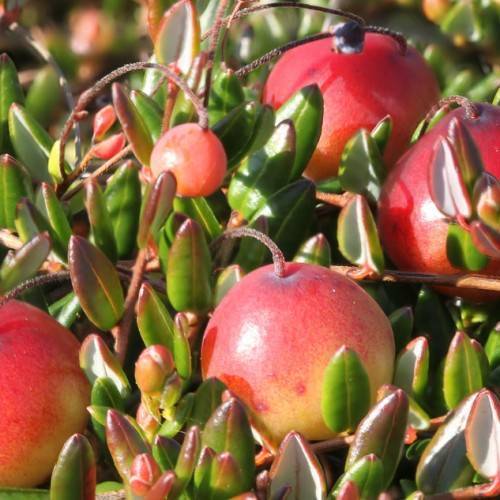
small cranberry
Vaccinium oxycoccos
Cycle:
Perennial
Watering:
Minimum
Hardiness Zone:
7
Flowers:
Flowers In Spring
Sun:
Deep shade, Filtered shade, Full sun, Part sun/part shade
Soil:
Acidic, Humus rich, Well-drained
Fruits:
Fruits In Autumn Ready In Fall
Edible:
Yes
Leaf:
Yes
Growth Rate:
Moderate
Maintenance:
Low
Salt Tolerant:
Yes
Care Level:
Medium
watering
For Thunderbird evergreen huckleberry trees, watering should be done thoroughly, once every week or 2 in the warmer months of spring and summer, and only as needed during the cooler months of fall and winter. When watering, make sure to saturate the soil thoroughly, until water runs out of the drainage holes. Allow the top layer of the soil to dry out before watering again.
sunlight
The Thunderbird Evergreen Huckleberry grows best in full sun to partial shade. Plants grown in full sun will usually produce much more fruit than those grown in partial shade. The plant prefers direct sunlight for at least 4 to 5 hours per day. It will grow in partial shade, but will perform better and produce more fruit when it gets more sunlight. When grown in full sun, the Thunderbird Evergreen Huckleberry should experience the most light between the hours of 10 am and 4 pm.
pruning
Thunderbird evergreen huckleberry (Vaccinium ovatum 'Thunderbird') should be pruned between spring and early summer. Prune only the branches that are dead, diseased, damaged or rubbing against each other. Aim to keep the shrub 1-2 feet tall and wide with an open center and evenly spaced branches to promote good air circulation. Remove no more than 1-third of the shrub at 1 time, and finish up with an application of compost or mulch.
